Odisha State Board CHSE Odisha Class 11 Invitation to English 3 Solutions Writing Using Graphics Textbook Activity Questions and Answers.
CHSE Odisha 11th Class English Writing Using Graphics
Using Graphics
We think of composition as the writing of paragraphs or essays in words. But sometimes a description can be made clearer and easier to understand by the use of some kind of pictorial representation.
There are different kinds of graphic representations – they are :
(a) The table
(b) The Bar chart
(c) The Pie chart
(d) The Organisation chart
(e) Pictograms
An example of a graphic representation is given below :
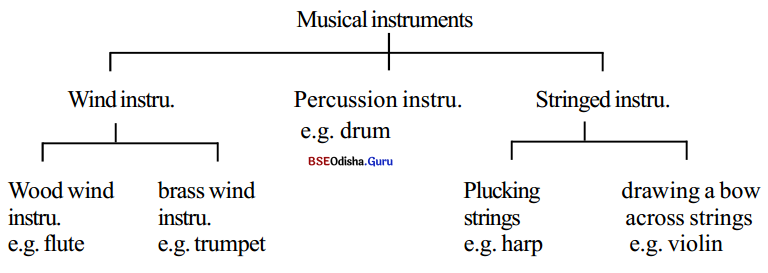
Another example of a graphic representation is given below for reference.
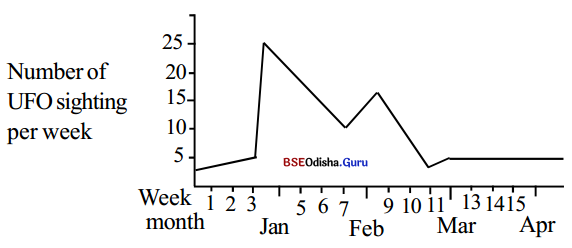
![]()
Activity 1
Now, read the following passages and say if they can be represented graphically. Draw neat labelled diagrams to go with or to replace these passages. (More than one answer is possible.)
(a) Iron is not found pure in nature. It is found in the form of iron compounds, particularly compounds of iron and oxygen. Such compounds are called ores. To get iron from its ore, layers of iron ore are placed in a blast furnace with coke and limestone. Coke has a high proportion of carbon in it. The mixture of iron ore, coke and limestone is heated in the blast furnace. A blast of hot air enters the blast furnace from the bottom and passes upwards.
The carbon in the coke combines with the oxygen in the iron ore and forms a colourless gas called carbon monoxide. The oxygen in the iron oxide is thus removed. The other constituents of the ore combine with the limestone to form a slag which floats at the top. The slag is removed from the furnace through a tap. The metal which remains is called pig iron. It is 91 per cent pure.
(b) In Britain most schools are financed by the state and for the children attending these schools, they are free. However, about 5 per cent of the school population attend private schools, and these are financed from pupils’ fees. For state-run as well as private schools the general pattern of schooling in Britain is as follows. All children must start school at the age of 5. At the age of 11, children move to different schools, called Secondary Schools, where they are made to go through a set timetable of subjects for a period of 5 years.
After this, they take their first public examination at the age of 16. After the first public examination, most pupils leave school. Only about 30 per cent continue. Those that stay on spend the next two years concentrating on a small number of subjects. They take their second public examination at the age of 18. In Britain, there is also a provision for pre-primary schooling. However, pre-primary schooling is not compulsory. On the other hand, it is voluntary and is offered both by state-run schools and private schools.
(c) It was the season’s hottest day, in Orissa today. The temperature in many places went beyond 40° Celsius. Of all the places in Orissa, Angul recorded the highest temperature of 43.5°. The other places that experienced an equally warm day were Bolangir and Jharsuguda. In these two places, the mercury soared up to 42.7°. Bhubaneswar, the capital city, recorded a high temperature of 42.2°.
The other places that were as warm as Bhubaneswar were Sambalpur and Cuttack with a recording of 41.8° and 41.2° respectively. However, Puri, Gopalpur, Paradip and Balasore, places near the sea, were relatively cooler. They recorded maximum temperatures of around 32° Celsius.
(d) Ramesh walks to school at 10. It takes him hardly 20 minutes to get there. After prayers, he attends classes from 10.30 a.m. to 4 p.m. which includes games- break for half an hour, from 1 to 1.30. At 4, when the classes are over, he comes back home with his friends. He greatly enjoys the return trip home as his friends and he usually amuses themselves with innocent jokes, makes fun and indulge in different kinds of innocuous mischief. On reaching home he gobbles up something quickly and scampers away to join his friends either in volleyball or in some country games, which he plays for just one hour.
At 6 he has a wash, says his prayers and sits down to study, from 6.30 to 9.30 in the evening. At 9.30 he has dinner, does some light reading and goes to bed by 10.30. Next morning he is up by 6.30. Within one hour he brushes his teeth, has a wash, etc. and by 7.30 he is at his study table. He does his homework from 7.30 to 9.30. At 9.30 he has an early lunch, packs his books in the bag and is ready to go to school.
![]()
(e) The poor in Indian do not have a lot of money. Their annual family income, on an average, comes to Rs. 20,000. But they make a lot of purchases and constitute the mainstay for most products in the country. For example, families belonging to his category own 47 per cent of all bicycles. 17 per cent of mopeds, 9 per cent of scooters, 11 per cent of motor cycles and 10 per cent of colour televisions. They even own washing machines.
The rich, in contrast, have money, but their share of purchases of these products is comparatively much less. Despite the money they have, they buy only 3 per cent of bicycles, 7 per cent of mopeds, 17 per cent of scooters, 20 per cent of motor cycles and 19 per cent of colour TVs. The poor earn less, but spend more. And the rich earn more, but spend less.
(f) Go straight along the National Highway upto Jayadev Vihar. Then turn left and take the Nandan Kanan Road. Keep going for about two kilometres and then turn right at NALCO Chhak. Continue until you come to the Sainik School, on the left. Don’t stop. Go straight ahead. You will reach Vani Vihar after half a kilometre. You can see the gates of Vani Vihar on the left, just 400 metres after Acharya Vihar traffic post. Enter, and go straight to the Administrative Block of the university.
(g) Junagadh is an ancient city in Gujarat. It is situated among the shadows of Mount Gimar. The name “Junagadh” – Juna (old) and Gadh (fort) – literally means “old fort”. On the outskirts of the city, there is a dark basalt rock. It stands on the way to Mount Gimar. The rock hols the inscriptions of three mighty dynasties. They included the Maurya and Gupta dynasties. The incriptions are in Sanskrit. In a jungle nearby, there is a stupa and some Buddhist caves.
They were built between 100-700 A.D. At the foot of Mount Gimar there is the sacred Damodar Kund (pond). It is one of the most important places of pilgrimage for the Jains. Another place of interest is the 19th Century Rang Mahal Palace, which presently houses government offices.
(h) Two leaves are removed from a destarched plant. The upper side of one and the lower side of the other are greased with vaseline. The stalk of each leaf is dipped in water and the leaves are left in light for four hours so that photosynthesis takes place. Most of the vaseline is wiped off and the leaves are placed in a solution of potassium iodide. The leaf greased on the upper-side develops a blue colour, showing that starch has been formed by photosynthesis from carbon dioxide, which entered through the leaf pores which are mainly on the under side. No colour develops in the other leaf in which vaseline blocked the pores.
![]()
Answer:
(a)
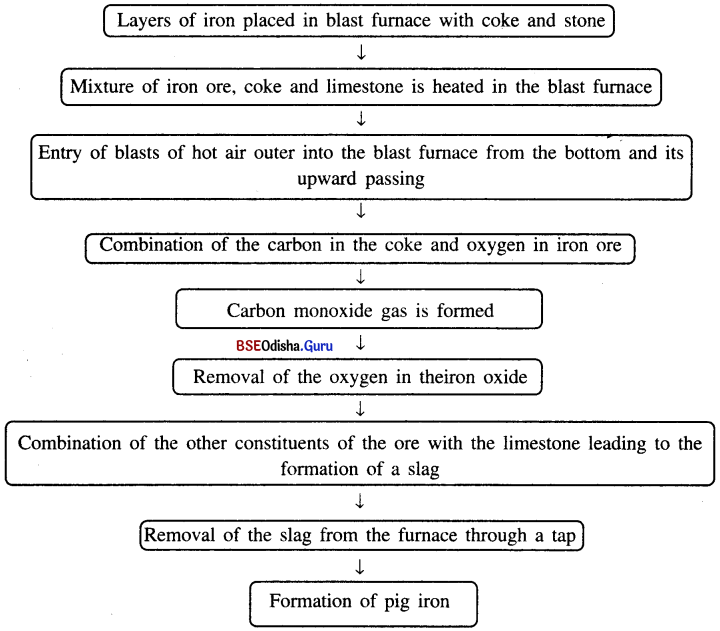
(b)
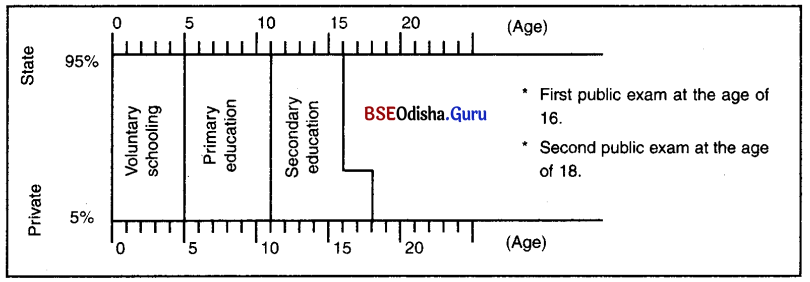
(c) Look at the table below, showing the maximum temperature recorded at different places in Orissa :
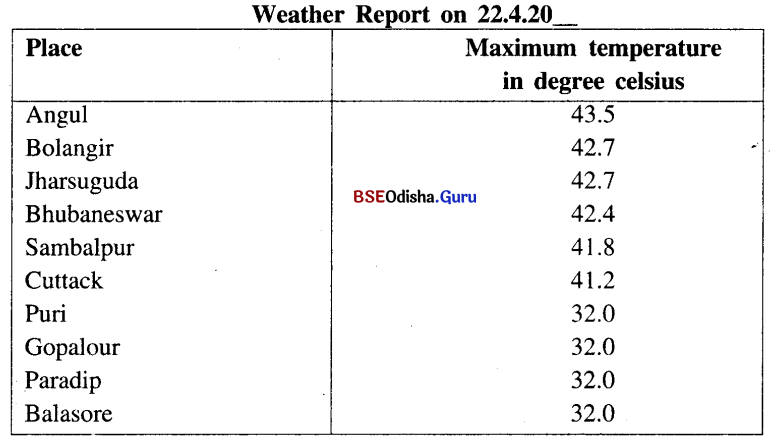
![]()
(d)
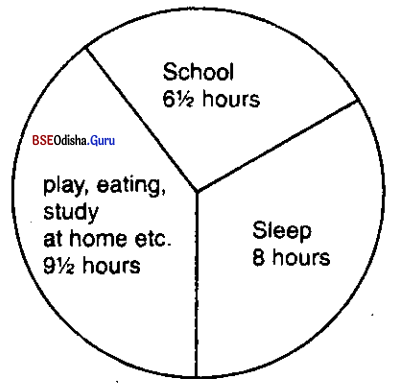
(e) Here is a chart that deals with the purchasing habits of the poor in India.
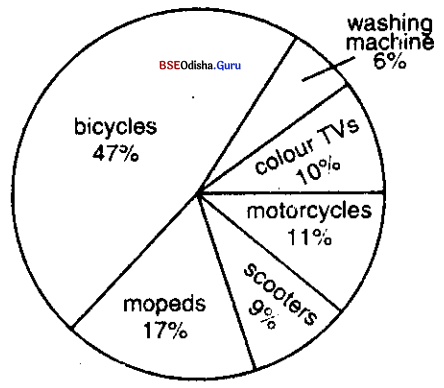
The following chart presents a contrasting picture of the purchasing habits of the rich :
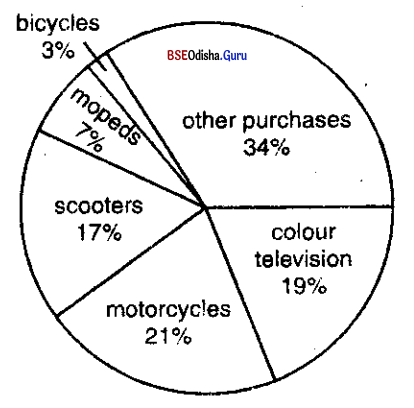
(f)
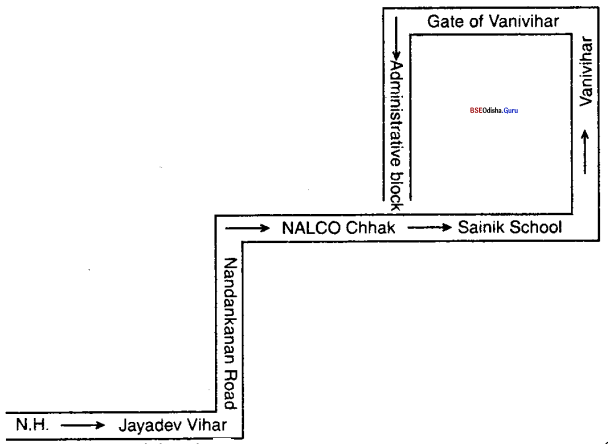
![]()
(g) Let us look at the table that deals with the beautiful spots of the nearby areas of Junagarh an ancient of Gujarat.
| Places of interest | Description of these places |
| Rock | dark and basalt with the inscriptions of mighii dynasties — Maurya and Gupta |
| Stupa and some Buddhist caves | builLhetween 100-7(X) A.D. |
| Damodar Kund | most important places of pilgrimage for the jams, situateLat the foot of Mount Girnar |
| 19th century Rang Mahal Palace | presently housing government offices |
(h) The flow-chart throwing light on an experiment concerning photosynthesis

Additional Questions With Answers
Question 1.
Write about 150 words in each of the following:
(a) The camel
(b) The ostrich
Answer:
(a) The camel:
The camel is a big animal. There are two kinds. One has two humps on its back; it is called the Bactrian camel. The other has one hump; it is called the Arabian camel. The camel is called “the ship of the desert”. Why? Because, as men cross the sea in ships, so they cross the desert on camels. Camels can go a long time with very little food or drink.
How can they do this? They carry stores of water in their stomachs, and much fat in their “humps”. A fasting camel is really feeding on its hump. The camel is also very strong and can go on day after day without getting tired. So it can make long journeys over the hot, dry sandy deserts. It is a fine sight to see a line of camels marching in a caravan. They hold their heads up proudly and tread steadily on.
(b) The ostrich:
The ostrich is the largest of all birds. Some ostriches are eight feet high. The ostrich is so strong that it can carry a man, like a horse. It has a long neck and a small head. It carries its head and neck erect. Its wings are small, and it cannot fly. But it has very strong legs. It can run faster than a horse. It defends itself by kicking. A kick from an ostrich can lame a horse, or kill a man. The ostrich is found in Africa.
It lives in dry sandy wastes, or a country covered with low bushes. It feeds on grass, leaves, seeds and berries. Wild ostriches are very shy. They are hard to catch, for they run so fast. Ostriches are hunted for the sake of their feathers. Ostrich feathers are very costly. Ladies buy them for their hats. Ostriches are now bred in large farms in Africa. The sale of their feathers pays well.
![]()
Question 2.
Write a short paragraph on each of the following:
(a) Electronic calculator
(b) A type-writer
Answer:
(a) Electronic calculator:
Electronic calculators are useful gadgets to have in homes, offices, shops and schools. They come in various sizes. There are desk models which are the size of a book or bigger. For personal use, there are mini-calculators that one can hold comfortably in one’s hand. Other models are even smaller. Every calculator has a keyboard showing numbers 0 to 9 plus mathematical symbols i.e. +, -, x, %. Above the keyboard is a display window and above the window, at one comer, is the switch with which one can turn the calculator on or off.
The calculator works this way. The operator presses the keys to feed a problem, say 13 x 12 = into the machine. The answer, 156, appears almost instantly in the form of some lighted numerals in the display window. All calculators help to do the basic functions of arithmetic. Some calculators, those with memory, can store numbers for use in future calculations.
(b) A type-writer:
A typewriter is a familiar machine in offices and homes. It is worked by hand. It prints letters or figures on a sheet of paper, one at a time. The type-writer consists of a metal frame, movable rollers and a set of keys. The metal frame also contains a set of small hammers with tiny letters or figures on the ends. The typewriter has a ribbon soaked in special ink which is held in position by two spools on either side of the metal frame. A sheet of paper is clipped against the roller. When one of the keys is tapped, a hammer goes and strikes the ribbon and presses it against the blank paper, thus printing the required letter. Then the roller automatically moves along, another key is tapped and the next letter is printed after the first.
Question 3.
Describe the following simple processes:
(a) Kite-making
(b) Mending a puncture
Answer:
(a) Kite-making:
To make a kite, we take two sticks and tie them together in the shape of a cross. Then we tie a string, passing along the tips of the sticks to make a frame for the kite. We then cut a piece of thin paper to a size slightly larger than the frame and folding the edges over the frame, stick them with glue. We tie another string about IV2 times the length of the longer stick to the two tips of the longer stick; this is the bridle. We tie the flying cord to the bridle. We attach a tail to the kite at the narrower end.
(b) Mending a puncture:
The process of mending a puncture starts with the removal of the tube from the rim. Then we blow up the tube a little and dip it into a pan of water to find the puncture. We clean the tube around the puncture. Then we put on a sticky substance. We put on a patch and allow it to dry. We put the tube back on the rim after it gets dried. At last, we blow up the tyre. This is how the puncture is mended.
![]()
Question 4.
Prepare outlines and write an argument in support of the following proposition.
The Government should ban smoking in public places.
A. Stating the proposition :
The government should ban smoking in public places.
B. Reasons for the ban :
a. Cigarette smoking is responsible for a host of illnesses ranging from heart attacks, hypertension and strokes to cancers of the mouth, lung and kidneys. These illnesses cause thousands of deaths each year and a staggering number of hospital visits and bills.
b. Ban on cigarette advertising in several countries, and health warning required by law on every cigarette packet on sale.
c. Smoking injurious to the health of the non-smoker.
d. Unpleasant for non-smokers to sit in smoke-filled rooms and halls.
e. Smoking is a serious fire risk in crowded places.
f. Still people smoke; hence the need for a ban by the government.
C. The other side of the case :
a. There are already enough no-smoking areas such as cinema halls, for example, therefore total ban is unnecessary.
b. Ban will further curtail their freedom to smoke.
D. Smokers’ objections refuted
a. Smoking is harmful to smokers and non-smokers. Non-smokers are as much risk as smokers.
b. Smokers should not harm the health of non-smokers in the name of freedom to smoke.
Answer:
The paragraph in the outlines :
Medical researchers have established cigarette smoking as the cause of a host of potentially fatal illnesses ranging from heart attacks, hypertension and strokes, to cancers of the mouth, lungs and kidneys. These illnesses are responsible for thousands of deaths each year and a staggering number of hospital visits and bills. Several countries have as a result banned cigarette advertising and made it compulsory by law for cigarette manufacturers to print a health warning on every cigarette packet on sale.
What is at stake is not just the health of the smoker; the non-smoker is as much at risk as a result of the passive smoking he or she is exposed to. It is extremely unpleasant for non-smokers to sit in smoke-filled rooms and halls. Finally, smoking is a serious fire risk in crowded places. Despite all this, people still smoke. The government, therefore, should intervene and ban smoking in public places.
Read More:
